Visibility of Rabee Awwal Crescent
(1430 AH)
- When to Observe Rabee Awwal Waxing (NEW) Crescent ?
- Rabee Awwal Waxing (NEW) Crescent Observation Results
- The OFFICIAL First Day in Different Countries
- When to Observe Safar (OLD) Crescent ?
- Safar Waning (OLD) Crescent Observation Results
The geocentric conjunction (Geocentric New Moon) will occur Inshalla on (Wednesday 25 February 2009) at 01:35 UT.
Sighting the new crescent on (Wednesday 25 February 2009) and (Thursday 26 February 2009) is shown in the below graphs using the program Accurate Times by Mohammad Odeh according to Odeh criterion. Where:-
According to the Universal Hejric Calendar (UHC), which is based on the calculated crescent visibility, the start of this month in the Eastern Region will be on Thursday 26 February 2009 and in the Western Region will be on Thursday 26 February 2009.
- Results of seeing the crescent, and the first day of the month in different countries will be added here Inshalla as we receive the reports from ICOP's members. If you wish to be a member in ICOP, or to know more about it, kindly click here.
So far, the earliest sighting of the crescent -after sunset- was on Wednesday 25 February 2009 from USA (Christiansburg, VA) by ICOP member Mr. Javad Torabinejad.
Wednesday 25 February 2009:
Thursday 26 February 2009:
We saw the new moon crescent on Thursday February. 26th .2009(08/12/1387 according to Iran calendar), in a region located in the east of Shahreza with these geographic coordinates:
The first observation of crescent parameters:
The first observation of crescent parameters:
The group was divided two and all of them observed the crescent
Topocentric and local time values from "Moon Calculator" (Refrac off):
Crescent first observation through naked eyes:
Photography information:
Thursday 26 February 2009:
Friday 27 February 2009:
The geocentric conjunction (Geocentric New Moon) will occur Inshalla on (Wednesday 25 February 2009) at 01:35 UT.
Sighting the OLD crescent on (Tuesday 24 February 2009) and on (Monday 23 February 2009) is shown in the below graphs using the program Accurate Times by Mohammad Odeh according to Odeh criterion. Where:-
Tuesday 24 February 2009:
Monday 23 February 2009:
When to Observe Rabee Awwal Waxing (NEW) Crescent ?

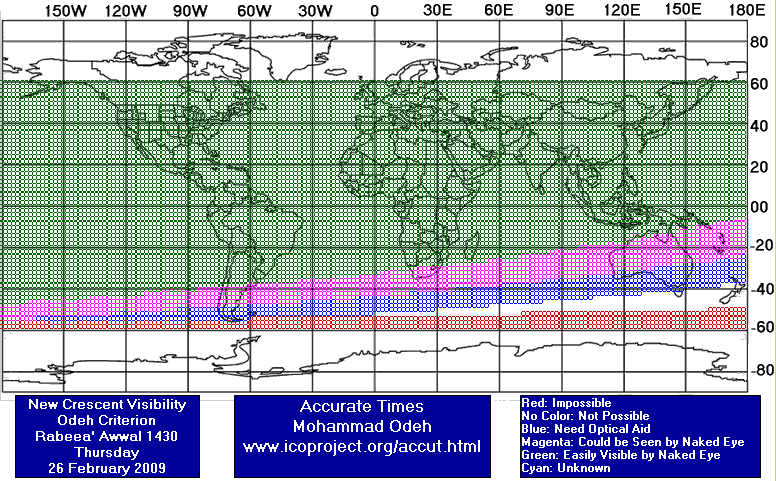

Rabee Awwal Waxing (NEW) Crescent Observation Results
- From: The Astronomy and Geophysics Centre Of Shahreza & Women Astronomy and Geography Society of Isfahan Province
- Reporter: Hossein Janghorbani, manager of the center
- Lat: 32° N
- Lon: 51° 52' E
- Ele: 1825 m
- Time Zone: +3.5
By: Parisa Naderi
Through: 15x70 binocular
Time: 17:38 LT
Moon Alt: 20.612
Elongation: 17.457
Moon Phase: 2.55%
Moon width: 0.71m
Rel Azi: 0.380
Moon Age: 36h 34m
By: Ali Janghorbani
Through: eye
Time: 17:50 LT
Moon Alt: 18.206
Elongation: 17.543
Moon Phase: 2.58%
Moon width: 0.72m
Rel Azi: 0.529
Moon Age: 36h 46m
The group members:
1. Dr Hemmat
2. Mohammad Javad Nikeghbal
3. Behnam rezaee
4. Saied Shirvan
5. Mahdi Malekian
6. Meysam Safian
7. Shahram Rahmati
8. Majid Heydari
9. Ali Bahrami
10. Hatef Zaraan
11. Davood Javeri
12. Mohammad Reza Payan
13. Reza Janghorbani
14. Ali Janghorbani
15. Hossein Janghorbani
16. Dr Bahreyni
17. Atefeh Aghaee
18. Fatemeh Baghoolizadeh
19. Zahra Heydari
20. Marzieh Asgari
21. Zahra Golabi
22. Mahrokh Khalifehsoltani
23. Badrosadat Khalifehsoltani
24. Hakimeh Ghermezi
25. Reyhaneh Akhavan
26. Raheleh Akhavan
27. Parisa Naderi
28. Najmeh Yossefi
29. Mottahareh Paian
30. Arezoo Tabibian
31. Zahra Fallahi
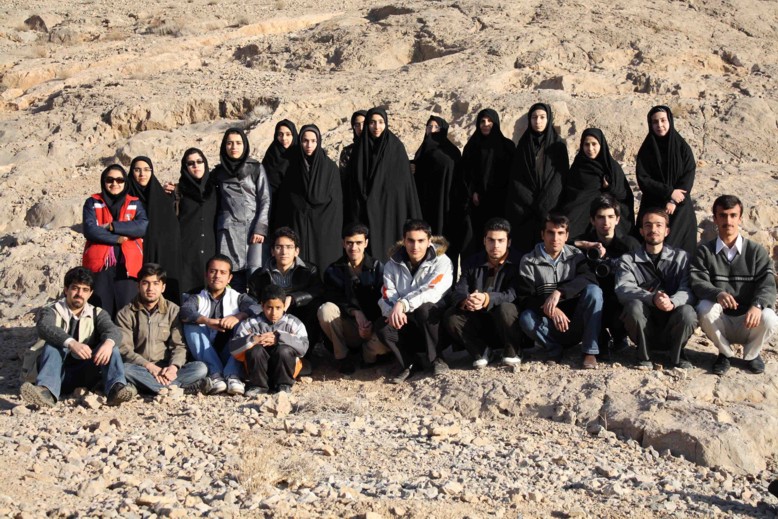
Location: Tehran, Iran (35° 32' 46.46" N - 51° 22' 13.75" E, 1028 meters from sea level)
Time zone: +3.5
Observer & Photographer: Alireza Mehrani
Crescent first observation through 7x50 binoculars:
Time: 17:47 LT
Moon Alt: 18° 39' 17"
Sun Alt: 1° 09' 18"
Elongation: 17° 30' 49"
Moon width: 0.72'
Moon Age: 36h 42m after conjunction
Time: 18:00 LT
Moon Alt: 16° 09' 20"
Sun Alt: - (1° 26' 38")
Time: 18:30 LT
Camera: Sony DSC H-9
Exposure Time: 1 sec
Focal Length: 78 mm
F-Number: F/6.3
ISO Speed: ISO-80"
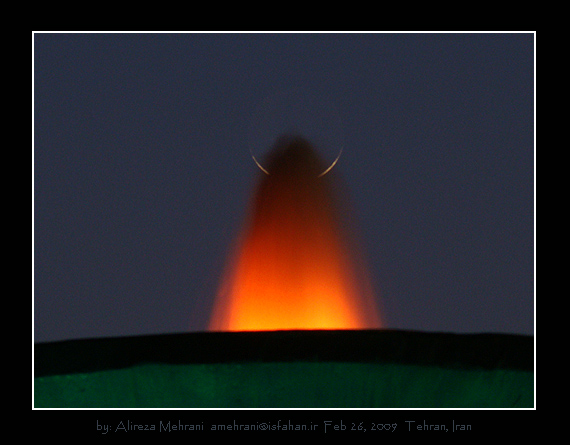

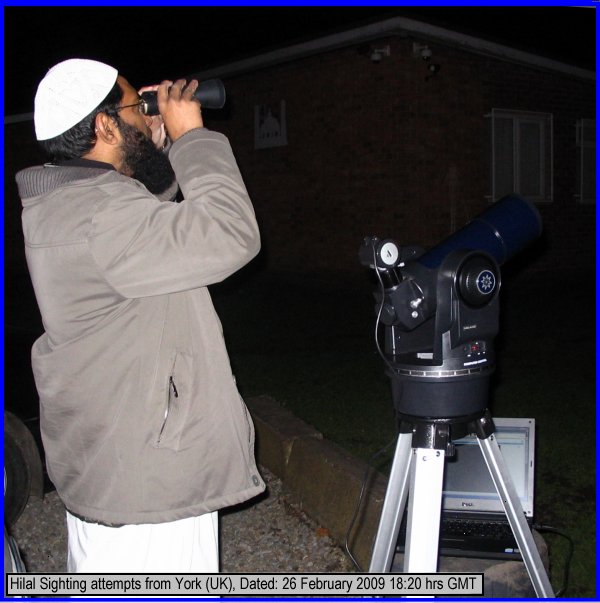

The OFFICIAL First Day in Different Countries

When to Observe Safar Waning (OLD) Crescent ?
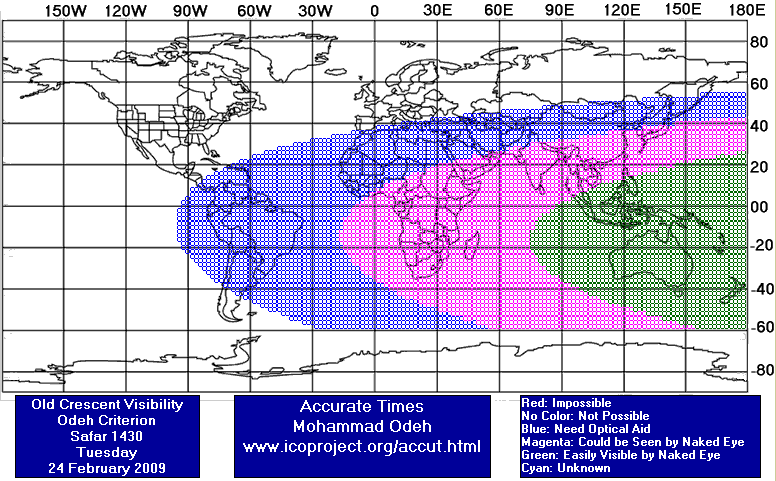
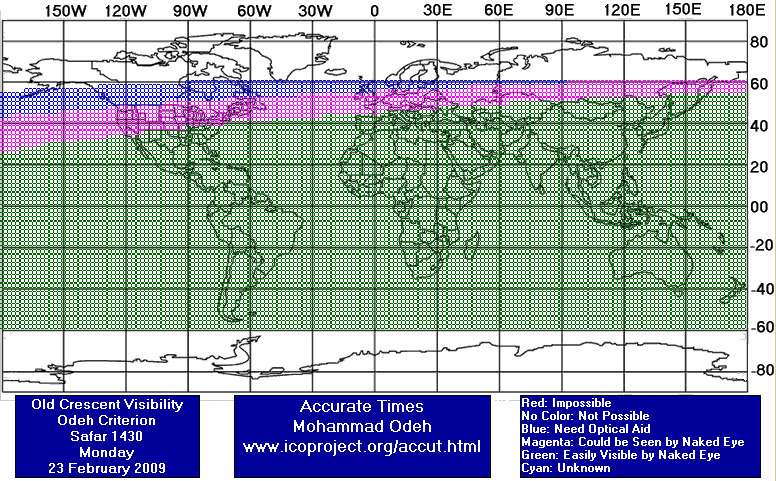

Safar Waning (OLD) Crescent Observation Results
- Status: NOT SEEN , the east-horizon was cloudy.
- Location: Bendo - Ketitang - Juwiring - Klaten, INDONESIA.
- Lattitude: 7° 41' S
- Longitude: 110° 44' E
- Time Zone: GMT+7
- Elevation: 98 m
- Moonrise: 04:51 LT
- Sunrise: 05:41 LT
- Moon alt @ Sunrise: 10° 58'
- Observer: AR Sugeng Riyadi"
By Moh'd Odeh. Copyright © 1998-2009 Islamic Crescents' Observation Project (ICOP), All Rights Reserved. This material may not be reproduced in any form without permission. For more information Kindly send E-mail





